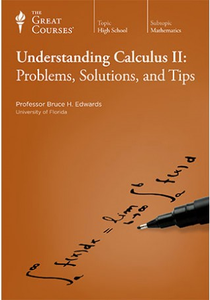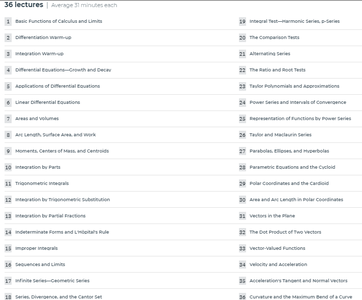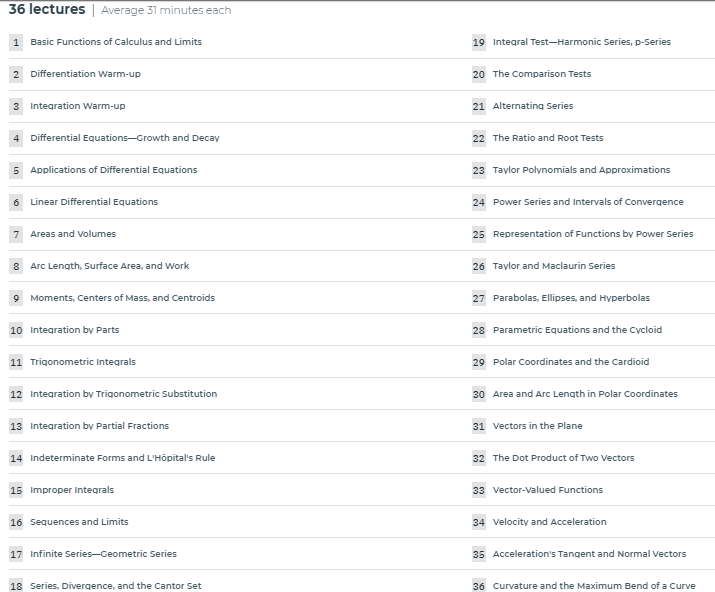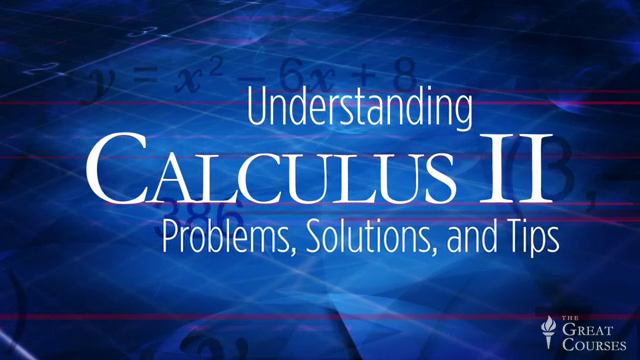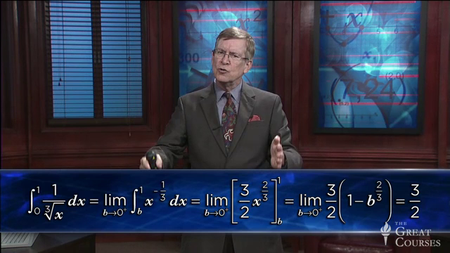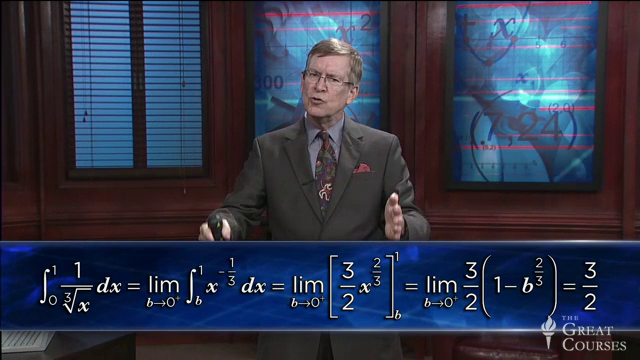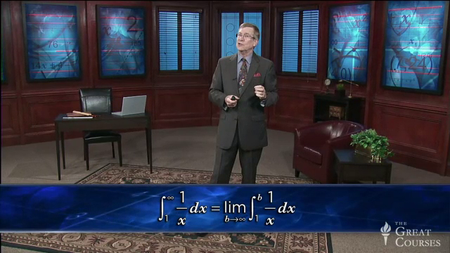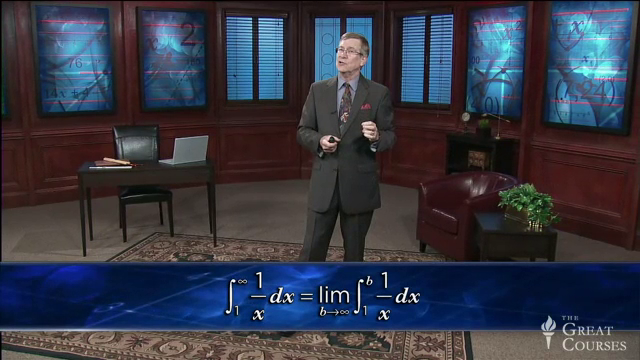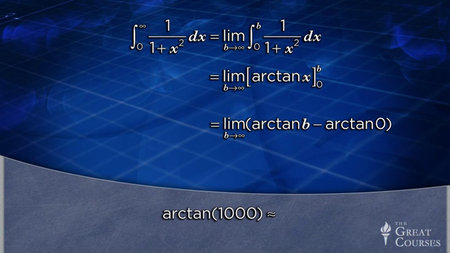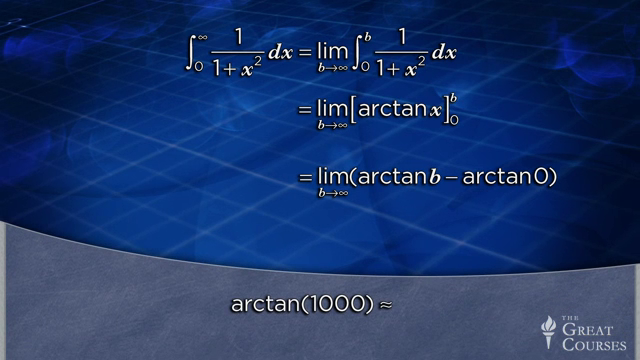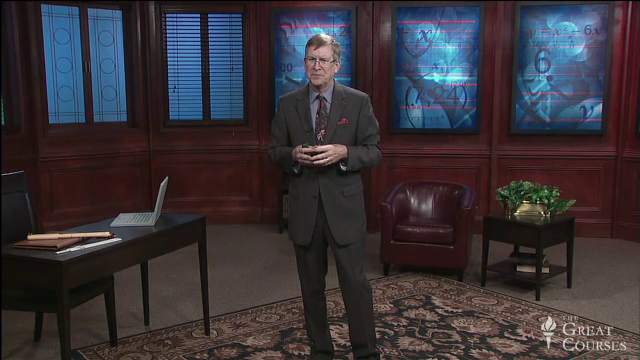TTC Video - Understanding Calculus II: Problems, Solutions, and Tips
WEBRip | English | FLV + PDF Guide | 640 x 360 | AVC ~1672 Kbps | 29.970 fps
AAC | 160 Kbps | 44.1 KHz | 2 channels | ~15 hours | 13.83 GB
AAC | 160 Kbps | 44.1 KHz | 2 channels | ~15 hours | 13.83 GB
Genre: eLearning Video / Calculus, Maths
Calculus II is the payoff for mastering Calculus I. This second course in the calculus sequence introduces you to exciting new techniques and applications of one of the most powerful mathematical tools ever invented. Equipped with the skills of Calculus II, you can solve a wide array of problems in the physical, biological, and social sciences, engineering, economics, and other areas. Success at Calculus II also gives you a solid foundation for the further study of mathematics, and it meets the math requirement for many undergraduate majors.But beyond these advantages, you will find that the methods you learn in Calculus II are practical, interesting, and elegant, involving ideas that are beautifully simple. Because it can model real-life situations, calculus has an amazing range of uses, and these applications come into full flower in Calculus II.
Understanding Calculus II: Problems, Solutions, and Tips takes you on this exhilarating journey in 36 intensively illustrated half-hour lectures that cover all the major topics of the second full-year calculus course in high school at the College Board Advanced Placement BC level or a second-semester course in college. Drawing on decades of teaching experience, Professor Bruce H. Edwards of the University of Florida enriches his lectures with crystal-clear explanations, frequent study tips, pitfalls to avoid, and—best of all—hundreds of examples and practice problems that are specifically designed to explain and reinforce key concepts.
Few calculus teachers are as qualified, accessible, or entertaining as Professor Edwards, who has won multiple teaching awards and coauthored a best-selling series of calculus textbooks. Many calculus students give up trying to understand why a particular procedure works and resort to memorizing the steps to a solution. With Professor Edwards, the underlying concepts are always clear and constantly reinforced, which greatly eases the path to learning the material.
Get behind the Wheel of the “Limit Machine”
Professor Edwards begins with a three-lecture review of the fundamental ideas of calculus. He also includes brief reviews of major concepts throughout the course, which makes Understanding Calculus II a self-contained lecture series for anyone who is already familiar with the two main operations of calculus, differentiation and integration. Professor Edwards takes these ideas beyond the definitions, rules, and formulas that are the focus of first-semester calculus and applies them in intriguing ways. For example:
Differential equations: This far-reaching field puts derivatives to work—modeling population growth, nuclear decay, falling objects, and countless other processes involving change. Professor Edwards recalls that as a young mathematician, he spent summers working for NASA, solving differential equations for aircraft in flight.
Infinite series: Does adding an infinite sequence of numbers give an infinite result? Not necessarily. The series may converge on a specific value, or it may diverge to infinity. Calculus can provide the answer for different types of infinite series and represent familiar functions from algebra or trigonometry in surprising ways.
Vectors: Among the geometric applications of calculus is the analysis of vectors. These are quantities, such as velocity, that have both magnitude and direction. In Calculus II, you learn techniques for evaluating vectors in the plane, allowing you to solve problems involving moving and accelerating objects, whether they are on a straight or curved path.
Understanding Calculus II covers the above subjects in considerable depth, particularly infinite series, which you explore in 11 lectures. You also study other standard topics in second-semester calculus, including
integration formulas and techniques,
integrating areas and volumes,
Taylor and Maclaurin polynomials,
L’Hôpital’s rule for evaluating limits,
evaluating improper integrals,
calculus applied to parametric equations, and
calculus applied to polar coordinates.
These very different applications of calculus each involve the essential idea of the limit. Professor Edwards notes that calculus can be thought of as a “limit machine”—a set of procedures for approaching infinitely close to a value. One of the interesting features of calculus is its logical rigor combined with its creative use of the mysterious entity of the infinite. From this unusual marriage emerge astonishingly precise solutions to otherwise inaccessible problems.
Explore the Immense Riches of Calculus
Calculus is full of fascinating properties, baffling paradoxes, and entertaining problems. Among the many you investigate in Understanding Calculus II are these:
Gabriel’s Horn: Rotate a simple curve around its axis and you get a three-dimensional shape that looks like an infinitely long trumpet. Called Gabriel’s Horn, this geometric figure has an unusual property: It has infinite surface area but finite volume. See calculus prove that this must be so.
Baseball thriller: A baseball 3 feet above home plate is hit at 100 feet per second and at an angle of 45 degrees. Employ Newton’s second law of motion and the derivative of the position function to determine if the ball will be a home run, clearing a 10-foot-high fence 300 feet away.
Cantor Set: Remove the middle third of a line segment. Repeat with the two pieces that remain. Repeat again ad infinitum. The end points of all the pieces will form an infinite set. But what about the total length of all the line segments? Summing this infinite series reveals the surprising answer.
Master Calculus on Your Own Schedule
Understanding Calculus II is an immensely rewarding experience that you can study at your own pace. Professor Edwards often encourages you to pause the video and test yourself by solving a problem before he reveals the answer. Those who will benefit from this engaging and flexible presentation include:
high school or college students currently, or about to be, enrolled in Calculus II who want personal coaching from an outstanding teacher;
high school students preparing for the College Board Advanced Placement test in Calculus at the BC level;
students in higher-level math courses or professionals who want a rigorous review of calculus; and
anyone interested in pursuing one of life’s greatest intellectual adventures, which has been solving difficult problems for over 300 years.
A three-time Teacher of the Year at the University of Florida, Professor Edwards knows how to help students surmount the stumbling blocks on their path to mastering calculus. In this course, he uses a steady stream of on-screen equations, graphs, and other visual aids to document the key steps in solving sample problems. The accompanying workbook is designed to reinforce each lecture with more practice problems and worked-out solutions, as well as lecture summaries, tips, and pitfalls; and formulas for derivatives, integration, and power series.
Professor Edwards’s lectures also include a feature he calls “You Be the Teacher,” in which he reverses roles, challenging you to answer a typical question posed in the classroom, design a suitable problem to illustrate a principle, or otherwise put yourself in the instructor’s shoes—an invaluable exercise in learning to think for yourself in the language of calculus.
Open Doors with Your New Fluency
The place of calculus at the end of the high school math curriculum makes it seem like a final destination. But it is also only a beginning. Calculus is a world unto itself, an ever-expanding collection of tools that can solve the most intractable problems in ingenious and often surprising ways. The deeper you go into calculus, the richer it gets and the better you are prepared for even more advanced math courses that open doors of their own.
In his last lecture, Professor Edwards looks ahead to where your math studies may take you after this course. It’s exciting terrain. Imagine arriving in a foreign country equipped with the ability to speak the nation’s language. Your opportunities for exploration, interaction, and further learning are almost limitless. That’s what Understanding Calculus II does for your fluency in one of the greatest achievements of the human mind.
also You can find my other: Maths-posts
General
Complete name : Lecture 01 - Basic Functions of Calculus & Limits.flv
Format : Flash Video
File size : 413 MiB
Video
Format : AVC
Format/Info : Advanced Video Codec
Format profile : High@L3
Format settings : CABAC / 4 Ref Frames
Format settings, CABAC : Yes
Format settings, RefFrames : 4 frames
Codec ID : 7
Bit rate : 1 672 kb/s
Width : 640 pixels
Height : 360 pixels
Display aspect ratio : 16:9
Frame rate mode : Variable
Color space : YUV
Chroma subsampling : 4:2:0
Bit depth : 8 bits
Scan type : Progressive
Writing library : x264 core 118 r2085 8a62835
Encoding settings : cabac=1 / ref=4 / deblock=1:0:0 / analyse=0x3:0x113 / me=umh / subme=6 / psy=1 / psy_rd=1.00:0.00 / mixed_ref=1 / me_range=16 / chroma_me=1 / trellis=1 / 8x8dct=1 / cqm=0 / deadzone=21,11 / fast_pskip=1 / chroma_qp_offset=-2 / threads=24 / sliced_threads=0 / nr=0 / decimate=1 / interlaced=0 / bluray_compat=0 / constrained_intra=0 / bframes=4 / b_pyramid=2 / b_adapt=1 / b_bias=0 / direct=3 / weightb=1 / open_gop=0 / weightp=2 / keyint=30 / keyint_min=16 / scenecut=40 / intra_refresh=0 / rc_lookahead=30 / rc=2pass / mbtree=1 / bitrate=1672 / ratetol=1.0 / qcomp=0.60 / qpmin=10 / qpmax=51 / qpstep=4 / cplxblur=20.0 / qblur=0.5 / ip_ratio=1.40 / aq=1:1.00
Audio
Format : AAC
Format/Info : Advanced Audio Codec
Format profile : LC
Codec ID : 10-2
Channel(s) : 2 channels
Channel positions : Front: L R
Sampling rate : 44.1 kHz
Frame rate : 43.066 FPS (1024 SPF)
Compression mode : Lossy
Complete name : Lecture 01 - Basic Functions of Calculus & Limits.flv
Format : Flash Video
File size : 413 MiB
Video
Format : AVC
Format/Info : Advanced Video Codec
Format profile : High@L3
Format settings : CABAC / 4 Ref Frames
Format settings, CABAC : Yes
Format settings, RefFrames : 4 frames
Codec ID : 7
Bit rate : 1 672 kb/s
Width : 640 pixels
Height : 360 pixels
Display aspect ratio : 16:9
Frame rate mode : Variable
Color space : YUV
Chroma subsampling : 4:2:0
Bit depth : 8 bits
Scan type : Progressive
Writing library : x264 core 118 r2085 8a62835
Encoding settings : cabac=1 / ref=4 / deblock=1:0:0 / analyse=0x3:0x113 / me=umh / subme=6 / psy=1 / psy_rd=1.00:0.00 / mixed_ref=1 / me_range=16 / chroma_me=1 / trellis=1 / 8x8dct=1 / cqm=0 / deadzone=21,11 / fast_pskip=1 / chroma_qp_offset=-2 / threads=24 / sliced_threads=0 / nr=0 / decimate=1 / interlaced=0 / bluray_compat=0 / constrained_intra=0 / bframes=4 / b_pyramid=2 / b_adapt=1 / b_bias=0 / direct=3 / weightb=1 / open_gop=0 / weightp=2 / keyint=30 / keyint_min=16 / scenecut=40 / intra_refresh=0 / rc_lookahead=30 / rc=2pass / mbtree=1 / bitrate=1672 / ratetol=1.0 / qcomp=0.60 / qpmin=10 / qpmax=51 / qpstep=4 / cplxblur=20.0 / qblur=0.5 / ip_ratio=1.40 / aq=1:1.00
Audio
Format : AAC
Format/Info : Advanced Audio Codec
Format profile : LC
Codec ID : 10-2
Channel(s) : 2 channels
Channel positions : Front: L R
Sampling rate : 44.1 kHz
Frame rate : 43.066 FPS (1024 SPF)
Compression mode : Lossy
Screenshots
✅ Exclusive eLearning Videos ParRus-blog ← add to bookmarks
Feel free to contact me PM
when links are dead or want any repost
Feel free to contact me PM
when links are dead or want any repost


